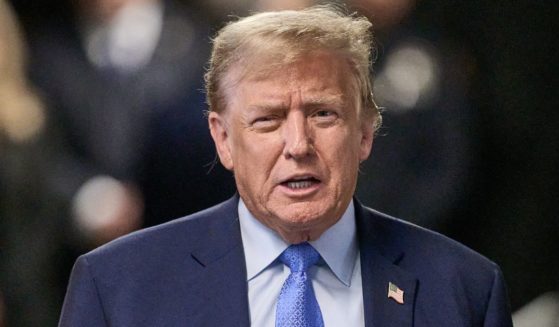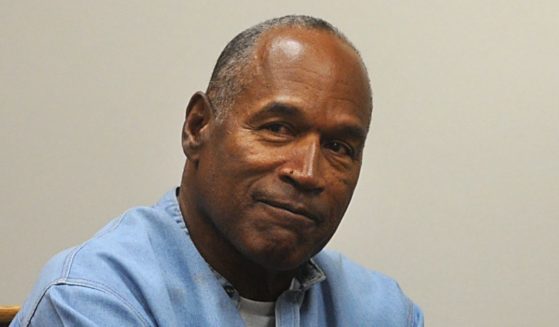Trump immigration push puts Miller, Kushner at odds
WASHINGTON (AP) — As President Donald Trump rails against an influx of migrants at the border , two of his most influential White House power players are at odds over the future of his immigration policy.
Fresh off orchestrating a shake-up at the Department of Homeland Security , an ascendant Stephen Miller is making a renewed push to impose tougher policies at the border. That’s setting up a face-off with senior adviser and presidential son-in-law Jared Kushner, who has been quietly working on his own immigration reform package for months.
Their divergent approaches to the president’s signature campaign issue speak to more than the ideological gulf between the two men: They echo a long-standing philosophical divide within the West Wing over how to best position the president ahead of his re-election campaign.
Miller, the mastermind of the president’s Muslim travel ban and other hardline immigration policies, has long been the combative ideologue, urging Trump to take ever-more-drastic action to stanch the border flow. Kushner, whose faith in his own careful dealmaking power rivals Miller’s zeal, has spent months meeting with lawmakers and interest groups, trying to put together a package of legal immigration and border security changes that Republicans can rally around heading into the 2020 presidential election.
The resulting parallel tracks — one bent on implementing ever-stricter policies and another meant to forge a more palatable and unifying legislative package — have created uncertainty and confusion both inside the administration and on Capitol Hill about where Trump is headed.
The conflict came into focus during a recent White House meeting when Trump effectively knighted Miller, saying the aide would oversee immigration going forward. But Kushner had already been tasked by the president with coming up with a legal immigration plan, which Trump was briefed on this week.
“We’ll talk to you about it soon,” Trump said Wednesday of Kushner’s plan, labeling it “very exciting, very important for the country.”
Despite the aides’ differing approaches, administration officials insist there is no ill will between Kushner and Miller, who have worked together over the years at the White House and on Trump’s campaign. The two are among the last remaining members of Trump’s tightknit 2016 team to still work at the White House and have been longtime collaborators, co-writing speeches, including the president’s convention address.
But for all that, the two hold fundamentally different views on immigration and notions on how Trump ought to govern.
Miller, the unrelenting hard-liner, sees illegal and legal immigration as existential threats to national security and the American worker, and views Trump as a generational voice willing to make dramatic changes. Kushner, a former Democratic-leaning real estate developer, sees a broken immigration system as another intractable Washington problem that could be solved with the right deal.
That leaves them working at cross purposes at times.
After Trump threatened to shut down the southern border two weeks ago, Kushner was among those whom Homeland Security officials worked with to get the president to back off. Indeed, Kushner is seen within the department as someone who accepts the realities of legal limitations and can be trusted to calm Trump down, not spin him up, as they feel Miller tends to do on immigration, according to three administration officials with knowledge of the dynamic. They spoke on condition of anonymity because they were not authorized to publicly discuss internal deliberations.
Senior administration officials have tried to paint Miller and Kushner’s efforts as complementary — Miller addressing the day-to-day crisis at the border while Kushner looking at longer-term solutions.
“President Trump alone sets immigration policy that’s designed to solve the humanitarian crisis at our border, prevent illegal entry into our country and protect the American people – there’s no daylight between the president’s team as they work to implement that agenda,” spokesman Hogan Gidley said in a statement.
Trump on Wednesday also challenged the notion that anyone was running his immigration policy other than him.
Asked by reporters whether he had considered tapping Miller to lead Homeland Security, Trump said: “Stephen is an excellent guy. He’s wonderful person.” But, he added, “Frankly, there’s only one person that’s running it. You know who that is? It’s me.”
But former officials said the absence of clear lines of authority and the recent purge of senior leadership at Homeland Security could create confusion, leaving the agency to implement whichever viewpoint wins the day.
“To whom are we listening? Who’s setting the priorities?” said David Lapan, the department’s former press secretary.
Thad Bingel a former senior Homeland Security official, who helped shepherd outgoing Homeland Security Secretary Kirstjen Nielsen through her confirmation process, echoed those concerns, saying that when it’s not clear who’s in charge at the White House, departments and subagencies “spin their wheels a lot trying to satisfy multiple masters.”
Raising the stakes further is that Kushner is no mere White House aide — he’s the president’s son-in-law and has proven capable of forcing staff turnover at the highest level. He was instrumental in the departure of two chiefs of staff and the president’s former chief strategist.
Kushner’s latest efforts on immigration date to early January, when Trump asked him to pursue a deal with lawmakers that would win the president more money for his border wall during the government shutdown.
While White House officials caution that the plan has yet to be finalized, aides said it would include “merit based” changes to the legal immigration system as well as proposals on border security that could include modernizing ports of entry and changing the way the country detains and removes people who enter the country illegally.
As part of that effort, Kushner has convened a series of informal listening sessions with almost 50 groups, including anti-immigration advocates, business and conservative groups coming together to talk through ideas. It was the same playbook he used last year on criminal justice reform, which culminated in the only major piece of bipartisan legislation the president has signed.
During those meetings, Kushner was been careful not to tip his hat on his personal views. But participants say they expect the plan to include significant changes, including increases in employment-based green cards. While protections for the hundreds of thousands of so-called Dreamers brought to the country illegally as children were a major point of discussion, a senior administration official said Dreamers are not currently part of the plan.
Jessica Vaughn, director of policy studies at the Center for Immigration Studies, which advocates for lower immigration levels, cautioned that unveiling a major plan now would be a distraction from the immediate border crisis.
“The timing couldn’t be worse,” she said. “It’s just the wrong time to be getting into a battle over this when the priority should be on fixing the border crisis and getting our enforcement on track.”
___
Associated Press writer Colleen Long contributed to this report.
___
Follow Colvin and Miller Twitter at https://twitter.com/colvinj and https://twitter.com/zekejmiller
The Western Journal has not reviewed this Associated Press story prior to publication. Therefore, it may contain editorial bias or may in some other way not meet our normal editorial standards. It is provided to our readers as a service from The Western Journal.
Truth and Accuracy
We are committed to truth and accuracy in all of our journalism. Read our editorial standards.












